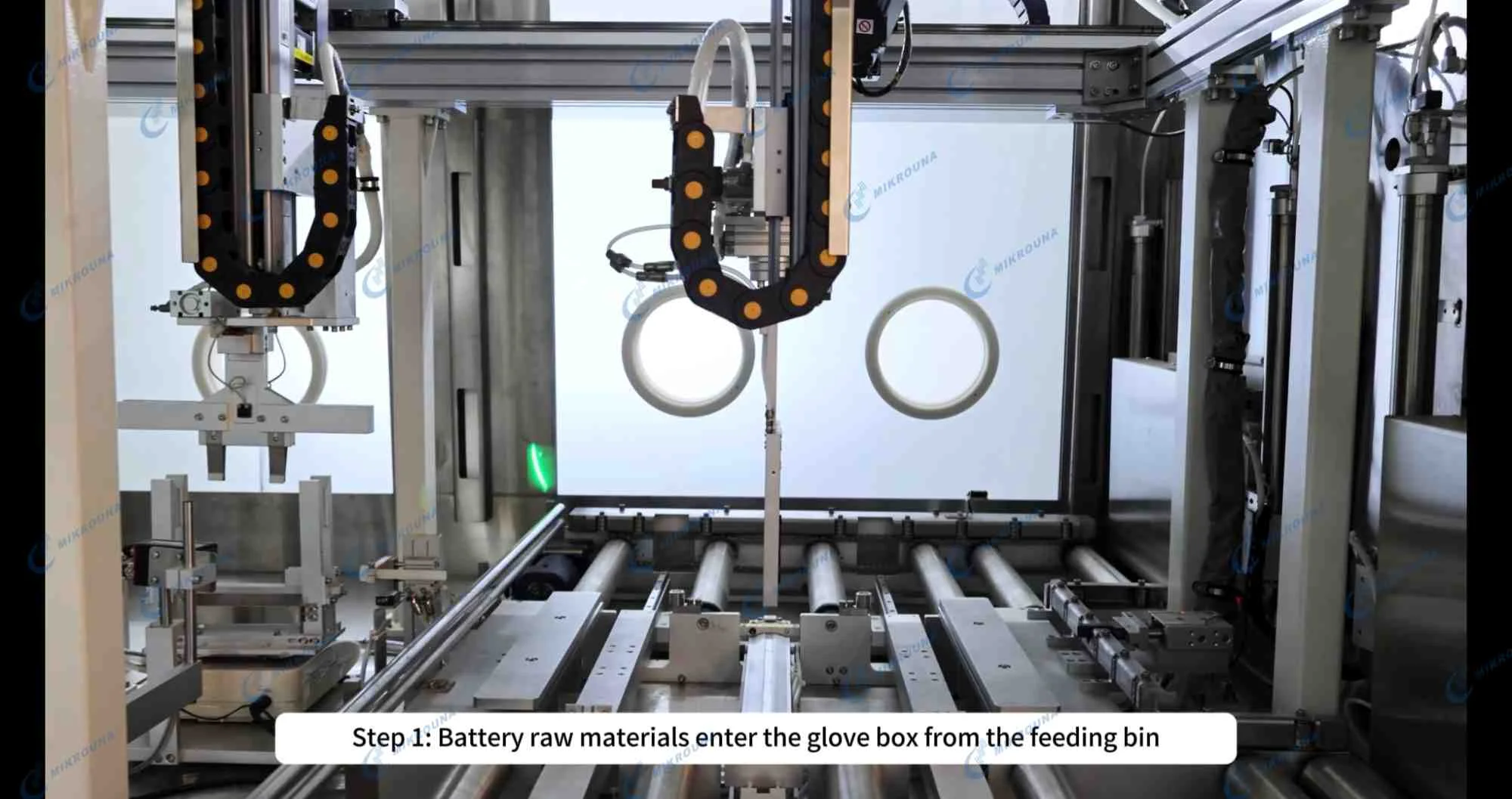The Technology Behind Auto Electrolyte Injection Machines for Pouch Cell Manufacturing
In the rapidly evolving world of battery technology, pouch cells have emerged as a popular choice due to their lightweight design and high energy density. As the demand for efficient and reliable battery production increases, auto electrolyte injection machines have become essential in the manufacturing process of pouch cells. These machines automate the electrolyte injection process, ensuring precision and consistency while enhancing productivity. In this article, we will explore the technology behind auto electrolyte injection machines for pouch cells, focusing on their components, functionality, and the innovations offered by Mikrouna.

Understanding Pouch Cells
Pouch cells are a type of lithium-ion battery that uses a flexible, lightweight pouch as its casing. This design allows for greater energy density compared to traditional cylindrical or prismatic cells. Pouch cells are widely used in various applications, including electric vehicles, portable electronics, and renewable energy storage systems.
Key Advantages of Pouch Cells:
- Lightweight: The flexible casing reduces overall weight, making them ideal for portable applications.
- High Energy Density: Pouch cells can store more energy in a smaller volume.
- Design Flexibility: The pouch design allows for various shapes and sizes to fit specific applications.
The Role of Auto Electrolyte Injection Machines
Auto electrolyte injection machines are integral to the production of pouch cells, as they automate the critical process of electrolyte injection. These machines enhance efficiency and accuracy while minimizing human error during manufacturing.
Key Functions of Auto Electrolyte Injection Machines:
1. Feeding Manipulator: The machine uses a servo motor manipulator (X, Y, Z axes) with cylinder clamping to retrieve, weigh, scan codes, and fill the tooling with pouch cells.
2. Weighing and Scanning Mechanism: This mechanism includes weighing before and after electrolyte injection, as well as code scanning before injection. It ensures accurate electrolyte dosing and traceability.
3. Battery Injection Tooling: The machine can accommodate 4 batteries per tooling set. The batteries move in steps through a pusher device, with the fixtures moving up and down and reflowing on a double-speed chain.
4. Vacuum Injection: The machine automatically opens the pouch cell air bag and confirms vacuum conditions before injecting the electrolyte. It also features an electrolyte level limit sensor and automatic replenishment functions.
5. Pressurized Standing under Vacuum: After injection, the batteries are transported to an automatic static standing station where they undergo multiple cycles of beating, positive pressure, and vacuum to ensure proper electrolyte wetting.
6. Vacuum Sealing: Each battery has a dedicated sealing head with a limit packaging design for easy maintenance and adjustment. The machine ensures uniform temperature and thickness during sealing.
7. Manipulator Unloading Mechanism: A servo manipulator (X, Y, Z axes) with cylinder clamping retrieves the sealed batteries, performs weighing and testing, and unloads them.
8. Electrolyte Supply System: The machine uses an independent control system with high-torque stepping motors to achieve accurate electrolyte dosing. The injection pump can deliver 0-2.5g of electrolyte with an accuracy of ±0.25%.
Components of Auto Electrolyte Injection Machines
The efficiency of auto electrolyte injection machines is attributed to their sophisticated components:
1. Feeding Manipulator
The feeding manipulator uses servo motors to precisely retrieve, weigh, and scan pouch cells before injection.
2. Weighing and Scanning Mechanism
This mechanism ensures accurate electrolyte dosing by weighing the cells before and after injection. It also scans the cell codes for traceability.
3. Battery Injection Tooling
The tooling can accommodate multiple batteries at once, moving them in steps through a pusher device. The fixtures move up and down and reflux on a double-speed chain.
4. Vacuum Injection System
The vacuum injection system opens the pouch cell air bag, injects the electrolyte, and removes air bubbles. It also features an electrolyte level limit sensor and automatic replenishment.
5. Pressurized Standing Station
The pressurized standing station subjects the batteries to multiple cycles of beating, positive pressure, and vacuum to ensure proper electrolyte wetting.
6. Vacuum Sealing Mechanism
The vacuum sealing mechanism uses dedicated heads for each battery, ensuring uniform temperature and thickness during sealing.
7. Control System
The control system utilizes PLC technology as its core, managing all machine operations and ensuring seamless integration with other production equipment through Ethernet connections.
Innovations in Auto Electrolyte Injection Technology
As battery technology continues to advance, so does the need for more efficient manufacturing processes. Innovations in auto electrolyte injection machines are focused on improving speed, accuracy, and flexibility:
- Enhanced Automation: Modern machines incorporate advanced robotics for faster handling and processing of pouch cells.
- Smart Monitoring Systems: Real-time data analytics allow manufacturers to monitor machine performance and make adjustments on-the-fly to optimize production efficiency.
- Modular Designs: Many auto electrolyte injection machines now feature modular components that can be easily upgraded or replaced as technology evolves or production needs change.
- Improved Safety Features: Enhanced safety protocols protect operators while ensuring that machines operate within safe parameters at all times.
Conclusion
Auto electrolyte injection machines play a crucial role in the efficient production of pouch cells by automating the critical process of electrolyte injection. With advanced features like vacuum injection, pressurized standing, and vacuum sealing, these machines ensure high-quality output while maximizing productivity.
At Mikrouna, we are committed to providing cutting-edge auto electrolyte injection solutions tailored specifically for pouch cell manufacturing. Our focus on innovation and quality ensures that our customers can meet the growing demands of the battery market with confidence.
If you're interested in learning more about our auto electrolyte injection machines or how they can enhance your production line, please reach out to us! Together, we can drive advancements in battery technology and contribute to a sustainable energy future.
- Art
- Causes
- Crafts
- Dance
- Drinks
- Film
- Fitness
- Food
- Juegos
- Gardening
- Health
- Inicio
- Literature
- Music
- Networking
- Otro
- Party
- Religion
- Shopping
- Sports
- Theater
- Wellness


